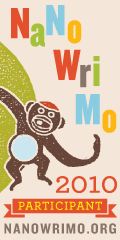
Aberdeen's Castle Gait, east terminus of granite-lined Union Street: Town House, medieval Tolbooth and Mercat Cross right and foreground
RICHARD CAMERON KELMAN was in his senior years Chairman of the Board of Directors of Craigenlow Quarries, Dunecht, before the Aberdeen-based company was sold in 1979 to Tarmac Holdings. Because of a former excelIent relationship established by Mr Kelman, his board and the late third Viscount Cowdray (Dunecht Estates), Tarmac continues to operate mineral rights courtesy of the present mineral rights holders, Dunecht Estates and the Hon. Charles Anthony Pearson, younger son of the former Viscount.
Richard Kelman wrote this article while the quarry still operated as an extraction business. It was originally published in the Aberdeen Press & Journal.
“In many parts of the rapidly changing Granite City of Aberdeen, where the insidious influences of steel and chrome, concrete and precast substitutes have not yet obligerated our traditional image, it is still possible to admire the beauty of the city’s native granite.
Take a walk round the roads not far from the famous Rubislaw Quarry — say down Rubislaw Den and streets adjacent — and there you may still see beauty in natural stone.
Not the straight-axed faces that make granite (or any other stone) so featureless, but the diamond-cut bull-faced block stone that bespeaks dignity and grace and character, and glistens like its brother mineral, the diamond, when cut to advantage.
Look at Earl’s Court Hotel in Queen’s Road in its grey dignity or the red and grey masterpiece of masonry at No.92.
Look also and admire the sheer magnificence of the salmon-pink granite mansion at 46 Rubislaw Den North.
FAMESuch are part of the past of our city, famous for its Marischal College (the second-largest granite building in the world) and for its many other civic structures — the Salvation Army Citadel, the main Post Office, His Majestys Theatre — built of the stone extracted from Rubislaw or Kemnay or Corrennie or Dancing Cairns or any other site where such attractive granites have been worked.
Recently [this essay was written in May 1972. Ed] Aberdeen Corporation’s direct labour force and other contractors have been uplifting almost the last of the granite setts that have been a feature of the city’s streets for so many generations. And it seems that with such a move they have closed a chapter on the history of Aberdeenshire granite, now so rarely used for monumental, ornamental or traditional building purposes.
What of the future?
It was perhaps only natural to expect that some of Aberdeen’s granites, with their high crushing strength, would be highly suitable for roadmaking and so it has turned out. As part of a massive national programme, this area has met the call of the motorway.
SPECIALISTS
The rapid development of roadstone production has been a specialist effort of Craigenlow Quarries Limited, from their site at Dunecht, about ten miles west of the city boundary. From this quarry came the raw materials of which Dunecht House was built by the first Viscount Cowdray, as well as stones for the erection of most of the village of Dunecht and adjacent countryside dwellings.

'The hole', 1955: Rubislaw quarry at the height of its production. Workings had to stop when the hole reached 466ft below surface
Today as would be apparent to anyone visiting the working area at Craigenlow, it has become one of the largest granite quarries in Scotland.
There could be no greater contrast between the methods of opertion of, say, 100 years ago and today.. Some weeks ago I had the peasure of escorting one of Aberdeen’s leading citizens round the quarry. He said to our manager: ‘I used to be involved in the quarrying business myself.’We were interested. ‘Yes,’ he said, ‘out in Burma when I was a prisoner-of-war working on THE ROAD.’
That allusion would be a fair comparison with 100 years ago in quarrying — the days of hammer and chisel. Today the industry is highly mechanised. For instance, last year the quarry consumed 1.25 million units of power, with an output potential of 2000 tons of crushed aggregates or bitumen-macadam a day for road-making and maintenance, general building work, precast stone manufacture and so on.
The quarry has a main face about 100-feet high and a few hundred yards long.
Since restarted in 1945, the ‘hole’ has grown and grown and is now more than 20 acres in extent.
From the ‘top’, 4.25inch holes are drilled about 100 feet down — 50 to 80 of them each time — about 15 feet back from the edge. Usiing specially hardened bits and powerful mobile compressors, it takes about four months to complete preparations for a blast.12-24 TONS
When ready, anything from 12 to 24 tons of explosives are loaded – the composition is constantly being changed in the course of experiment – but it is generally a mixture of ammonium nitrate and open-cast gelignite.
In the early days a blast was a big occasion, involving formal invitations to VIPs such as the Lord Provost, town and county officials and colleagues in the building industty, road surveyors and so forth; those who could be included consistent with strict safety measures laid down by the Ministry of Mines and the police.
Records for December 1961 recall . . .
‘Most successful blast: probably around 150,000 tons; superb weather (in December); strong west sun; blast most dramatic; little small stuff reached the “trenches”, but dust cloud very intense, heavy with minute grit particles which covered all the onlookers in the pillboxes and behind the special screens.’
BLAST ON TV
‘Numerous photographers; BBC television and ITV – this time with sound-recording units; blast on television at 6p.m. that night (ITV) and the sound background (countdown and blast) was excellent. All guests attended late luncheon at Broadstraik. George Leslie (manager) gave a technical comment of the morning’s activities and I addressed the company afterwards.’
That was ten years ago and more. . . now the firm take each job (blast) in their stride, but are always relieved when its successful completion is reported.
In an address to that representative gathering at the Broadstraik Inn that December I said:‘It is rare that a month goes past withut some comment in the Press babout the granite trade. Recently some critics were laying it on thick about the travesty of ersatz shop fronts on main street. Quite rightly, too. Our native city has a reputation to maintain and any encroachment by modern shop fronts in chromium and the like will merely bring a pseudo and garish appearance to our ancient dignified city.
NONSENSE
‘We hear so much nonsense about the Aberdeen granite trade. As a loyal and proud citizen, I resent irresponsible comments that find their way into the Press about our industry which dates back over 500 years.

World's second-largest granite building, Marischal College, designed by Archibald Simpson, 1836-1844
‘Even as early as 1884 the granite masons who had become world-famous for their skill in working their native stone found that the range of colours in local granite was not sufficient to meet the demand.
MARKET GONE

Marischal College's Mitchell Tower incorporated elements of the old college heraldic ceiling, which will be saved from vandalism or council alteration
‘Two World Wars have finished what tariffs and quotas began and cheaply-produced foreign stone from Europe and India is allowed to flood the home market, so that up until recently the monumental and ornamental side of the trade reached an uncertain state.
‘Now the trade has turned to another line which is developing most promisingly — the construction of granite facings for buildings.
‘All these activities do not concern us here today. Much as it is admirable that Aberdeen’s master masons are again holding their own in the skills that have been handed down for over 500 years, the fact must be faced that most of their raw materials are being imported from abroad: Finland, Norway, Sweden and further afield.
TRADITION
‘In a modest way we might claim that at Craigenlow we are trying to maintain a tradition. Each year a famous name in the history of granite in this Northeast corner of Scotland is added to the obituary list. The ruthless sword of economics cuts indiscriminately.
‘Survival becomes dependent on productive efficiency and so far as Craigenlow is concerned, we who carry the company’s administrative burden can, I think, look with confidence to the future business of keeping the flag of the granite industry flying, maintaining the traditions which were created so long ago.’
‘Today — 10 years later — that confidence has proved justified. It is true that few quarries have survived the last 10 years. Even the most famous of them all — Rubislaw — has ceased to operate.
‘But we feel that skilled management and harmonious teamwork, service at any hour and on any day and excellent public relations, have created their own reputation over the last 25 years.
‘The old anonymity is gone for ever and we find ourselves in the forefront of the extraction industry, even on a national scale.'”
©1972-1986 Richard C Kelman

Provost Skene's House, saved from destruction when Council flattened Aberdeen's medieval Broad Street in 1970s to build concrete offices which they are now demolishing by dynamite
Misuse of public funding and available resources continues.
Currently the Market Square in Oldmeldrum (twice altered in the last 30 years) is receiving a third facelift, to the chagrin of enraged traders and local residents who were not asked to approve the plan. Again stone being used is not local, but some granite facing is being incorporated–from a Chinese quarry-alongside concrete conglomerate, at a cost to the taxpayer of £370,000. To add to the so-called pedestrian precinct (which upon revision cannot be implemented because Aberdeenshire Council failed to provide adequate alternative routing for traffic) is the installation of a stone sculpture on the Square at a further cost of £23,000. Aberdeenshire Council is presently facing bankcruptcy. Aberdeen City Council is already bankcrupt.
RC Kelman will be turning in his (Craigenlow-granite-topped) grave.

Detail of Marischal College granite: Aberdeen Leopards from the City's coat of arms form a decorative frieze in the former University building
Guestrow ghosts must be seeking revenge. The concrete structure– locally humourously referred to as the ‘penthouse with the best view in Aberdeen–because it is the only place you cannot see the building’–is itself to be flattened (i.e. blown up). All this dynamite and gelignite would please the old Kelman granite heart.
Ed. (2010)
















Recent Comments